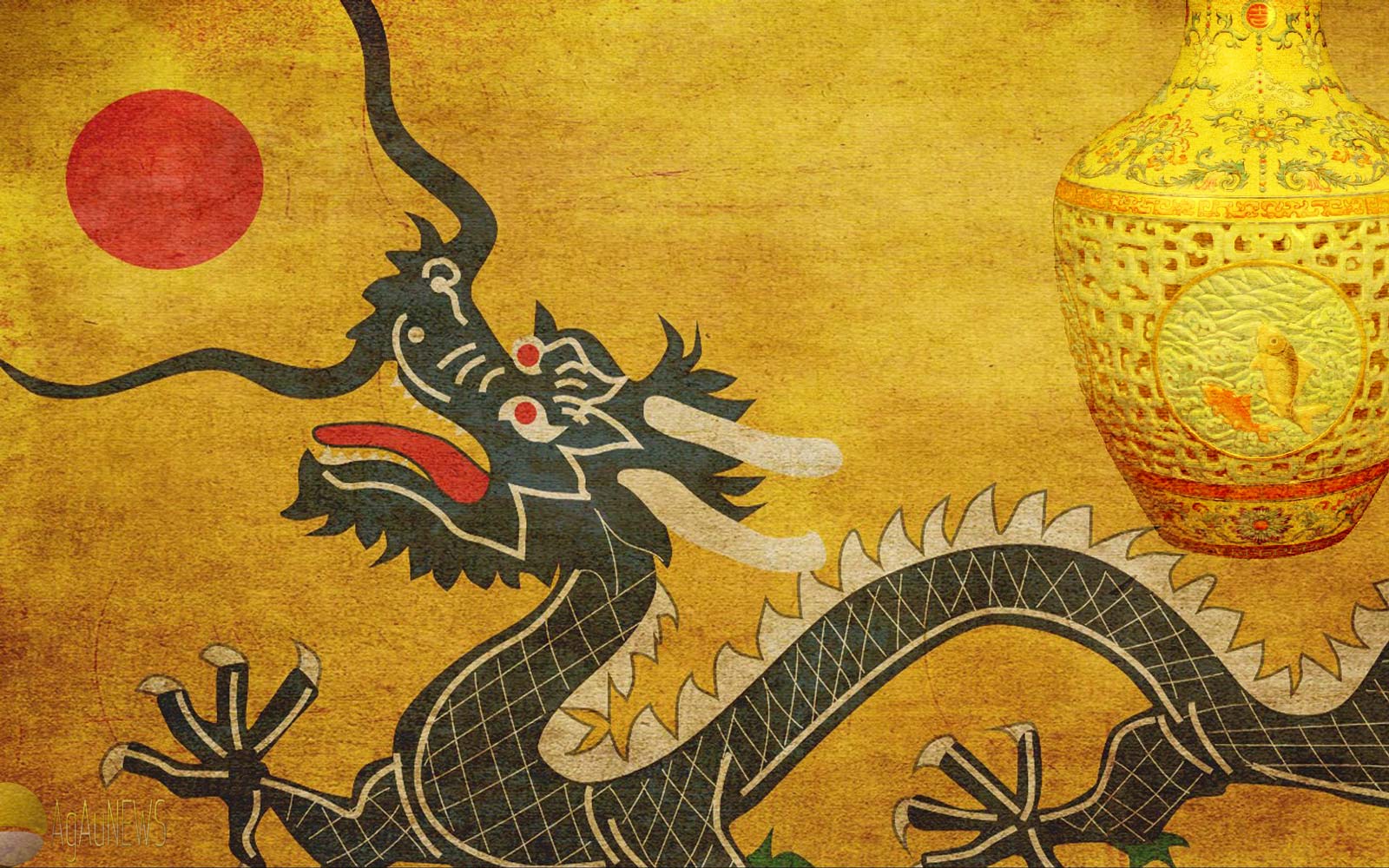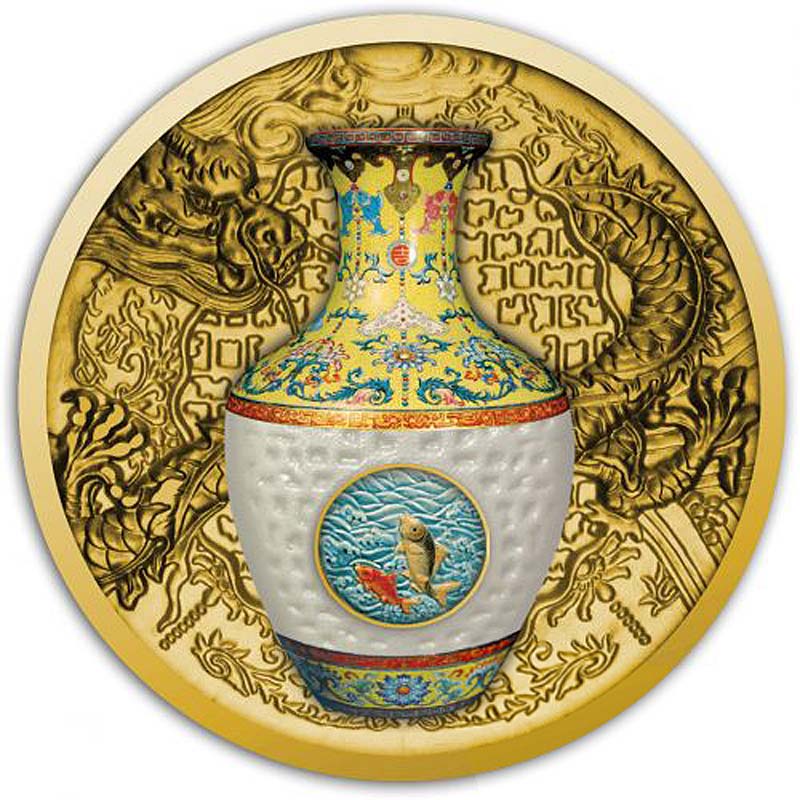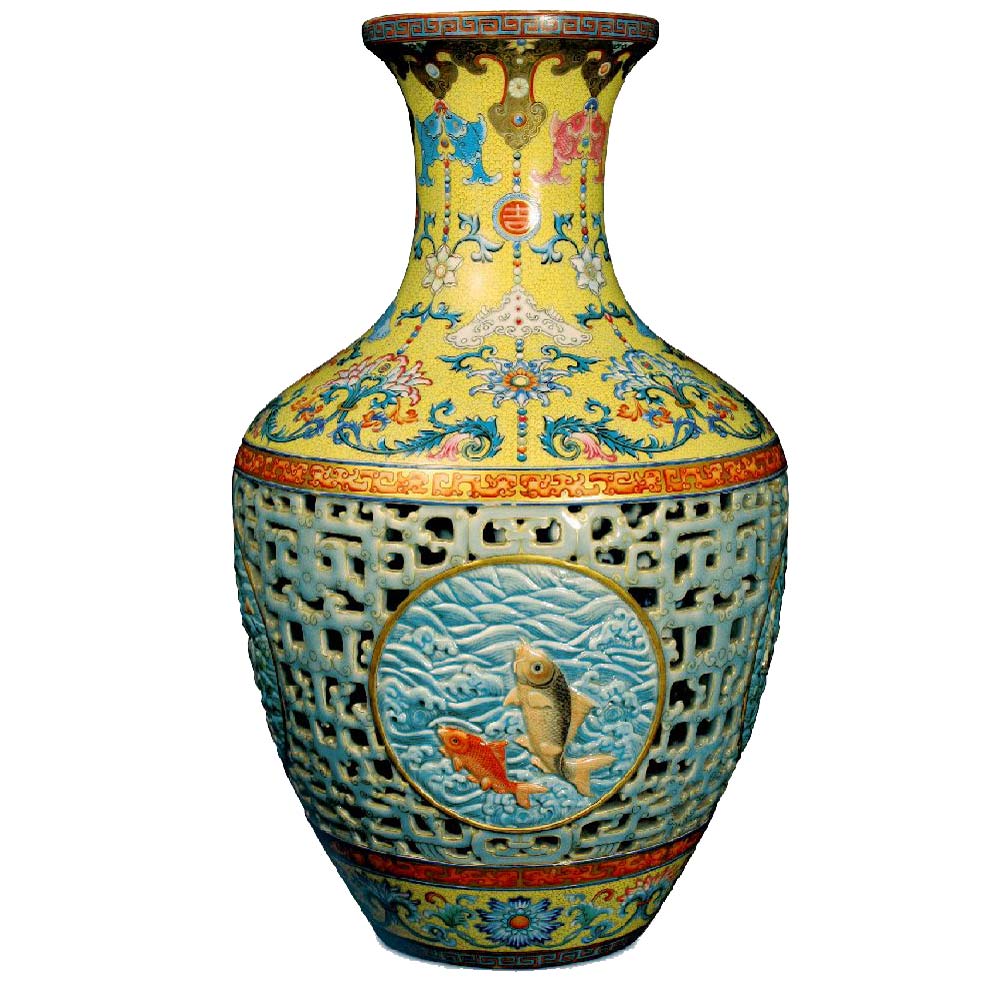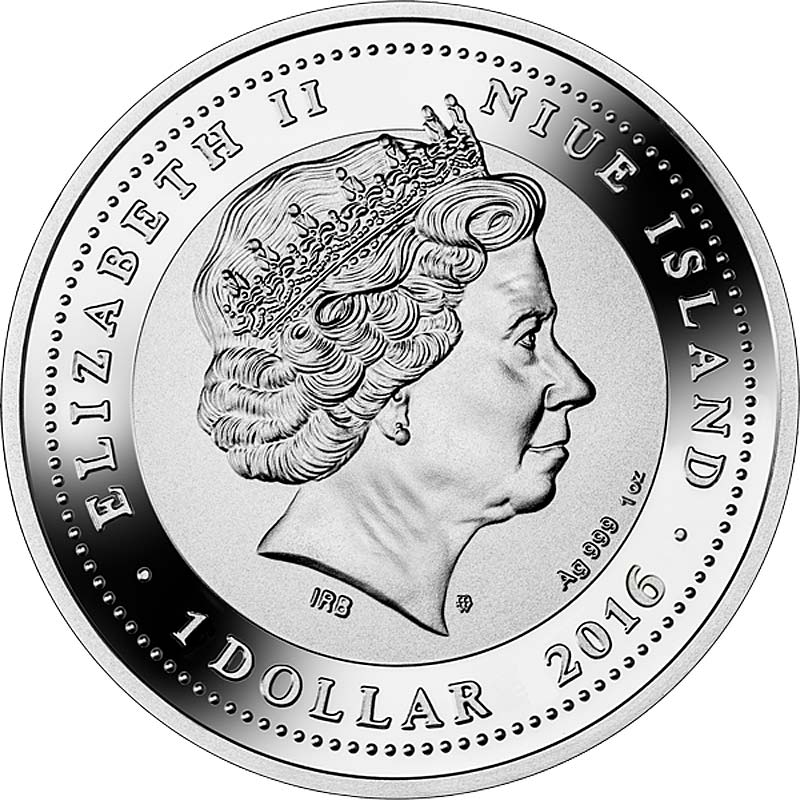The race to put new and interesting inserts in modern commemorative coins continues apace with the Mint of Polands latest piece celebrating what was once the most expensive Chinese antiquity ever sold at auction, the Qianlong Vase. There aren’t many materials that you could use to represent a porcelain vase on a coin with, so the mint has gone with the most obvious choice, porcelain itself. Fired by a Polish porcelain factory based in Cmielow, the company was a runner-up in the prestigious 7 New Wonders of Poland contest, so clearly know what they’re doing. The end result is a quite amazing miniature representation of the now famous vase sitting bang centre of a 38.6mm silver coin.
In the background of this reverse face is struck a Chinese dragon, a symbol of strength, vitality, power and wealth, along with some decorative motifs from the vase exterior. The obverse of the coin is the standard Mint of Poland Niue design, so no surprises there. What is a surprise is the choice of formats. The first is a Mint of Poland signature, a 17.5g fine silver coin, one that they use as a baseline for many of their series like SOS Endangered Animals, Stunning Galaxies, and Fascinating Birds, for example. While we can certainly understand the desire to produce a gold version, the second format choice is quite an ambitious one for so niche a coin subject, a 1.5oz 0.9999 gold coin. At 46.5g, it’s certainly not going to be a cheap coin with dealers listing it at around $4,000, but we guess there were strict limitations on the diameter of the coin set by the size of the porcelain miniature, so 1.5oz it is. We believe the mintage of the gold is 100 pieces, although we’ve seen one dealer claim it be just 50. By comparison, the silver is set at 999. Both coins come packaged in one of the excellent Nimbus-style latex-skin display frames which suit thick coins like this very well.
Both the gold and silver coins are due to ship in January and make a fascinating collectible of an object with an intriguing backstory.
THE QING DYNASTY
The Qing dynasty, also called the Manchu dynasty, was the last imperial dynasty of China, ruling from 1644 to 1912 with a brief, abortive restoration in 1917. It was preceded by the Ming dynasty and succeeded by the Republic of China. The Qing multi-cultural empire lasted almost three centuries and formed the territorial base for the modern Chinese state.
The dynasty was founded by the Jurchen Aisin Gioro clan in Manchuria. In the late sixteenth century, Nurhaci, originally a Ming vassal, began organizing Jurchen clans into “Banners”, military-social units. Nurhaci formed these clans into a unified entity, the subjects of which became known collectively as the Manchu people. By 1636, his son Hong Taiji began driving Ming forces out of Liaodong and declared a new dynasty, the Qing. In 1644, peasant rebels led by Li Zicheng conquered the Ming capital Beijing. Rather than serve them, Ming general Wu Sangui made an alliance with the Manchus and opened the Shanhai Pass to the Banner Armies led by Prince Dorgon, who defeated the rebels and seized Beijing. The conquest of China proper was not completed until 1683.
Sun Yat-sen and other revolutionaries competed with reformers such as Liang Qichao and monarchists such as Kang Youwei to transform the Qing empire into a modern nation. After the death of Empress Dowager Cixi and the Guangxu Emperor in 1908, the hardline Manchu court alienated reformers and local elites alike. Local uprisings starting on October 11, 1911 led to the Xinhai Revolution. Puyi, the last emperor, abdicated on February 12, 1912.
THE FEATURED VASE
Back in November 2010, a delicate, decorative Qing Dynasty vase found when a brother and sister in West London were clearing out the attic of their family home, went up for auction with a starting bid of $800,000. Expected to sell for a couple of million, thirty minutes of frantic bidding saw the price rise to a new record for a Chinese antiquity, a staggering $69.5m ($85.9m when the auction house cut was added in). Unfortunately, the story didn’t end there.
The pastel yellow and sky-blue coloured, 16″ tall, ovoid vase decorated with four enamelled cartouches showing fish and flowers, has extensive perforations on the outside showing through to an inner vase. Thought to have fired during the reign of the Emperor Qianlong (1735-1796), and at the imperial potteries in Jingdezhen just west of modern day Shanghai, the vase is believed to have been produced for one of Qianlong’s imperial palaces. It’s rarity and value were obvious.
What happened next was less so. The Chinese buyer refused to pay, reportedly because he didn’t want to pay a levy fee of £8.6m, ($12.8m) and after much travelling between countries, the sale fell through.
It’s not all bad news. In early 2013 it was reported that a sale had finally been agreed for between £20-25m ($30-37m), for something found in a attic and thought to be worth at most $3m, that’s still quite a result. It has continued to raise concerns about the reliability and professionalism of Chinese buyers and agents in the rapidly appreciating Chinese antiquities market.








Where they sell this porcelain inserted silver and gold collector coins? Where I can buy this silver or gold coins?
Uh . .. I seriously LOVE the look of these!